-
Tired of adverts on RWI? - Subscribe by clicking HERE and PMing Trailboss for instructions and they will magically go away!
You are using an out of date browser. It may not display this or other websites correctly.
You should upgrade or use an alternative browser.
You should upgrade or use an alternative browser.
Build a Pressure Tester for 30 Dollars
- Thread starter mucrewbtp
- Start date
Wildcatfan
Active Member
- 13/2/18
- 259
- 50
- 28
I think this is an Improvement on the Nalgene bottle idea but to each to their own. Hopefully some will find this useful!
This is how you do a DIY post! Excellent work and completely thorough and understandable.
Wildcatfan
Active Member
- 13/2/18
- 259
- 50
- 28
drphillyfly
Getting To Know The Place
- 25/9/16
- 36
- 4
- 8
So I built one of these to pressure test my 10 reps (I figured the economics were on my side given that it'd be $40 per watch to get someone else to test them). This was surprisingly easy. I think I spent around C$60 on the parts, but I already owned a 160 PSI 1/4" NPT pressure gauge from another project (but those are only around C$20)... so for the price of testing two watches you can probably build one of these yourself, assuming you have a few tools around and are reasonably handy.
I made a slight modification to the designs listed above. I used a dremel tool to bore holes into a structure of the lid so that I could take a piece of bent coat hanger and make a rung to hang my watches from with tape. Here are a few pics of my tester. Also, I only tested up to 6 bar (around 90 PSI) and I wore eye protection when I was using the device because I was kinda terrified I was making a bomb.
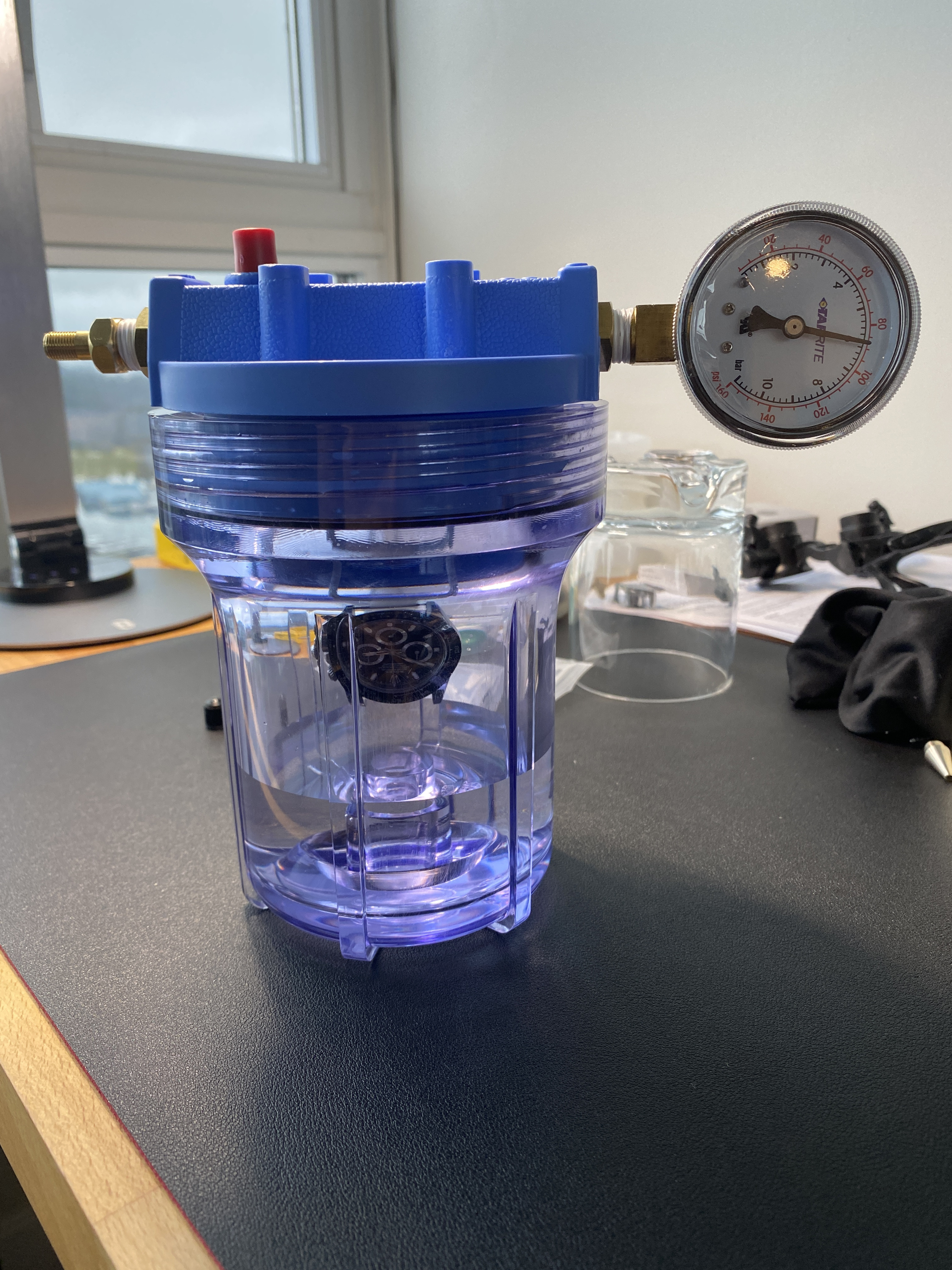
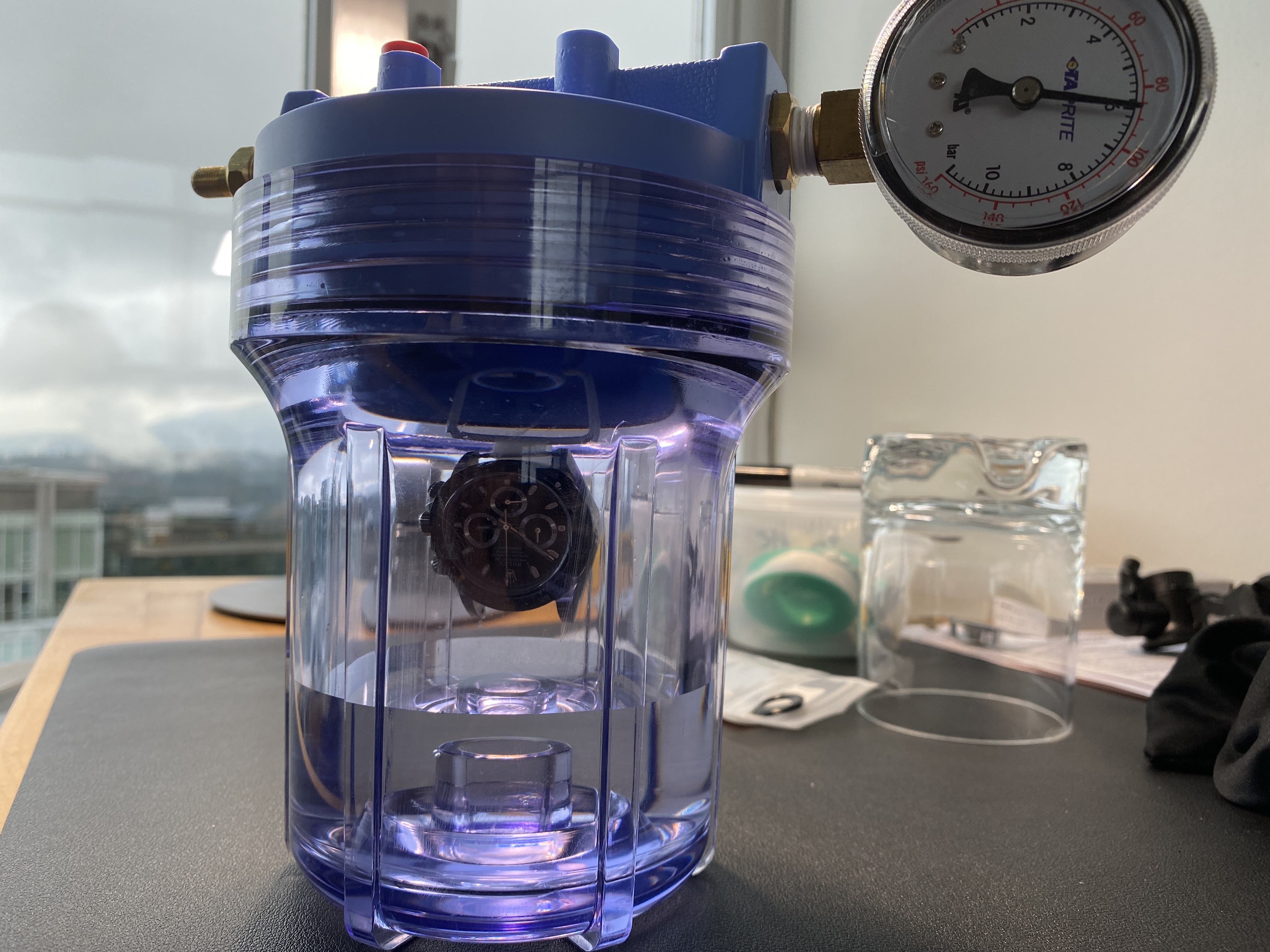
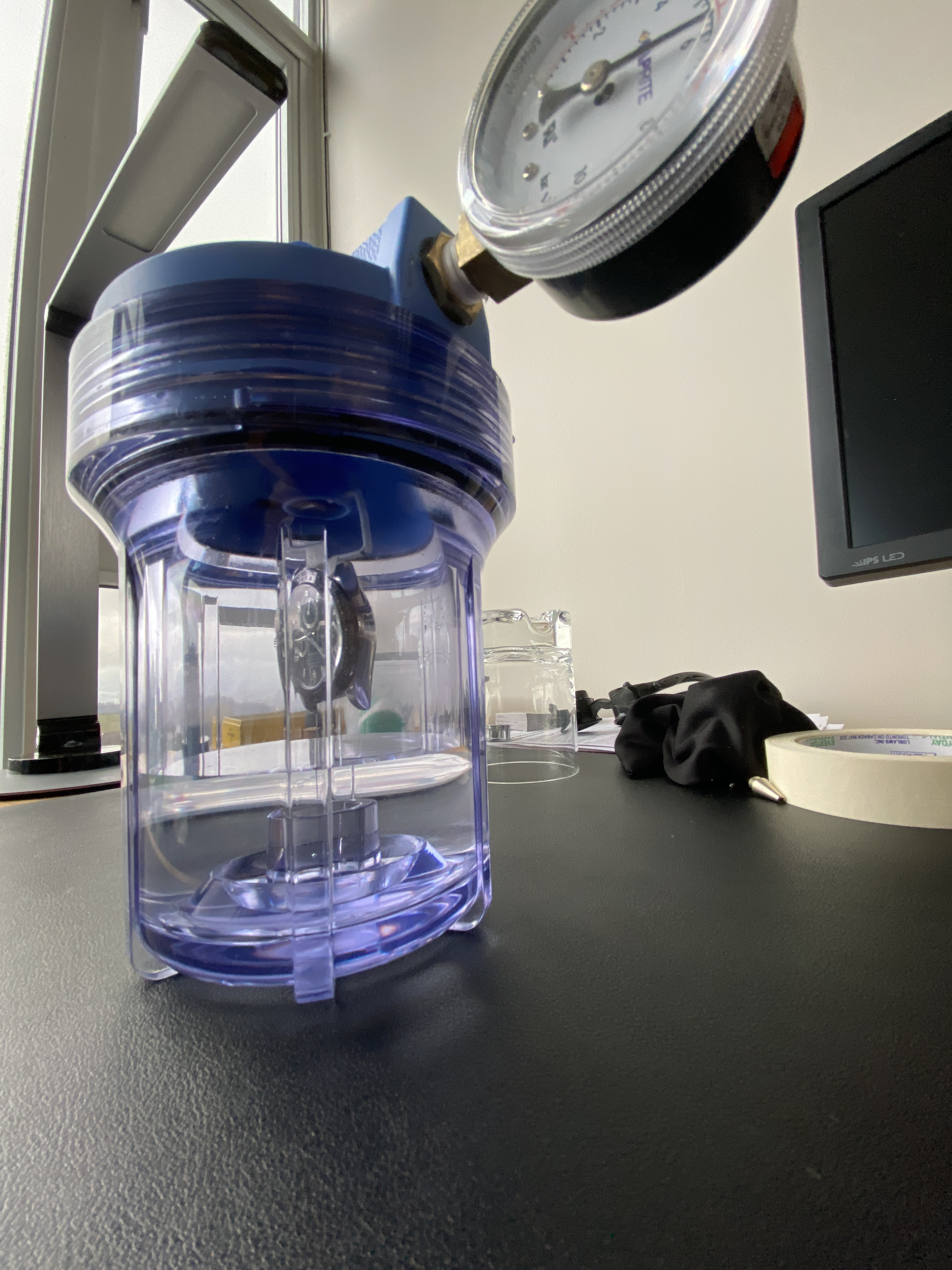
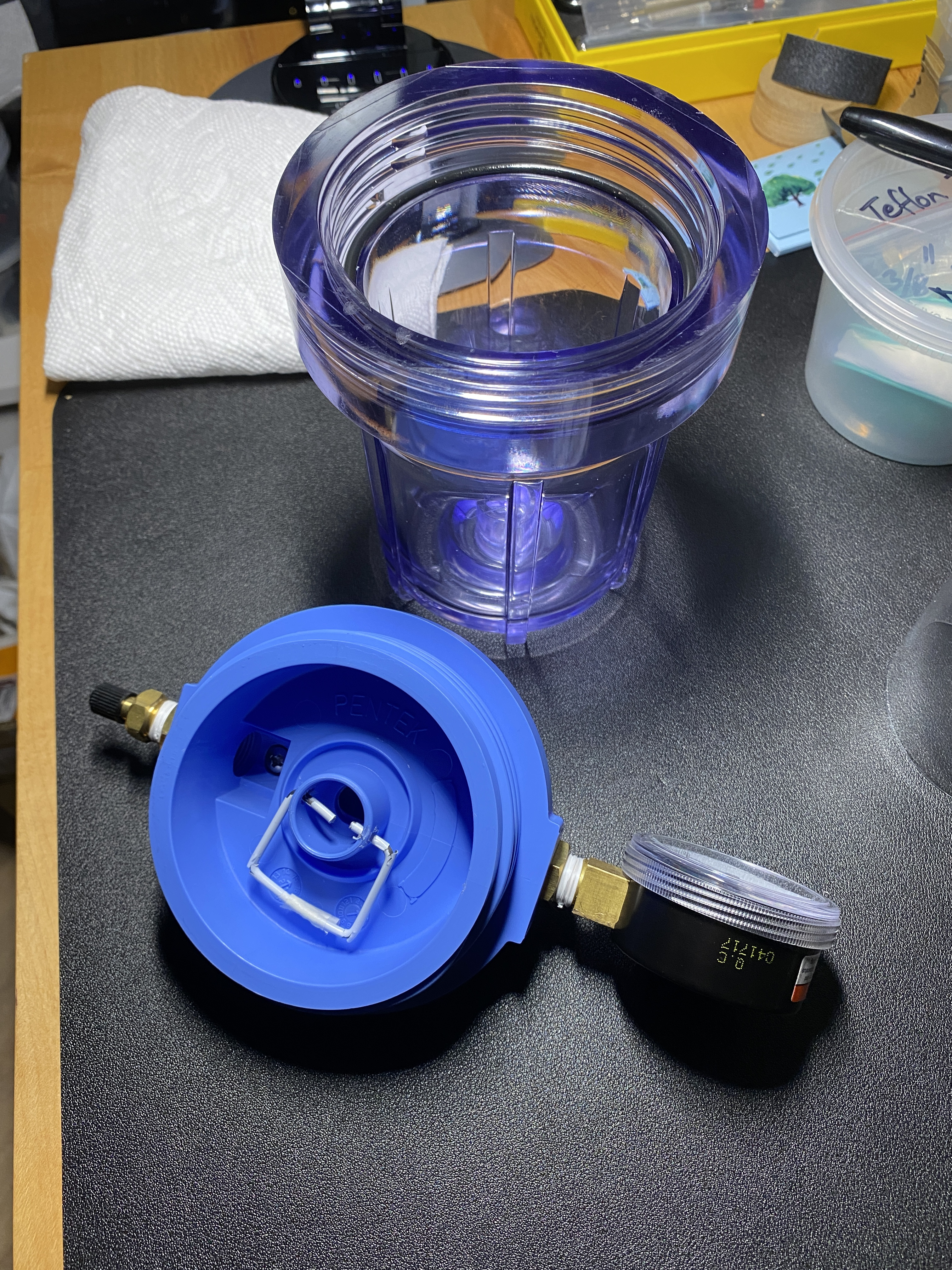
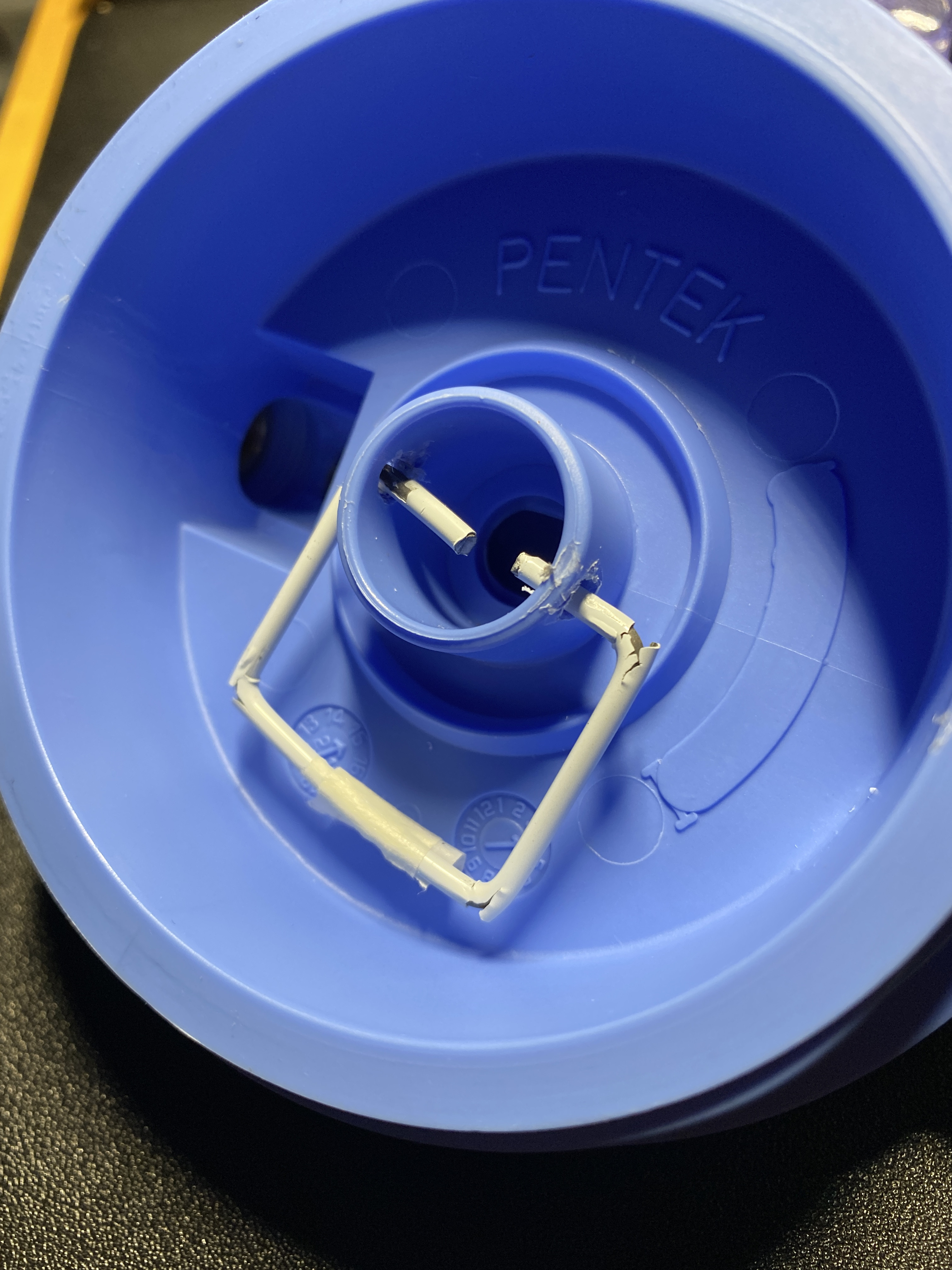
Also, it turns out none of my watches leak... or rather they're all water resistant up to a pressure of 6 bar (or roughly 60m or 200ft). It was kind of a good news / bad news situation. I really wanted to see bubbles because then I'd know my tester worked; but I also really didn't want to see bubbles because that would mean my watches were waterproof. In the end, no bubbles.
I made a slight modification to the designs listed above. I used a dremel tool to bore holes into a structure of the lid so that I could take a piece of bent coat hanger and make a rung to hang my watches from with tape. Here are a few pics of my tester. Also, I only tested up to 6 bar (around 90 PSI) and I wore eye protection when I was using the device because I was kinda terrified I was making a bomb.





Also, it turns out none of my watches leak... or rather they're all water resistant up to a pressure of 6 bar (or roughly 60m or 200ft). It was kind of a good news / bad news situation. I really wanted to see bubbles because then I'd know my tester worked; but I also really didn't want to see bubbles because that would mean my watches were waterproof. In the end, no bubbles.
anarchos
Do not accept unsolicited offers
- 5/2/21
- 13
- 5
- 3
Another good option is to get an inline water filter housing. Those are designed to take pressure and would eliminate having to re-tighten the lid of a Nalgene and there'd be no leakage around the drilled hole. I used one once to build a pressure vessel for a coolant system for a DIY CNC machine. The small filter housing usually have 1/4" NPT, so all you'd need is a 1/4" NPT bung to block off one side, and then a 1/4" NPT to Shrader valve adaptor. You could probably pick up everything on amazon (or local hardware store...maybe not the shrader adaptor?) for $20.
Edit: Apparently I can't read and there's a post above explaining exactly this. Sorry
Edit: Apparently I can't read and there's a post above explaining exactly this. Sorry
Last edited:
40mm
Active Member
I've always wondered what happens when a rep watch fails this pressure test. Is it not full of water, and ruined? You would have to quickly open it up and dry everything off before corrosion sets in. Would this not require a full disassembly?
I've always thought it was better to not try the test - but I may not be understanding something.
I've always thought it was better to not try the test - but I may not be understanding something.
If the crystal pops off, you’re fucked. The watch is flooded and will require a full service — disassembly, cleaning, re-assembly, re-lubrication.I've always wondered what happens when a rep watch fails this pressure test. Is it not full of water, and ruined? You would have to quickly open it up and dry everything off before corrosion sets in. Would this not require a full disassembly?
I've always thought it was better to not try the test - but I may not be understanding something.
If the watch fails the test, the bubbles you see are high pressure air escaping into the water, but since most leaks are slow, the watch still has more high pressure air inside preventing the water ingress. Fluids flow along pressure gradients. When you release the pressure on the tester, if the watch leaks, it will still be full of high pressure air, while the surrounding water will be at low pressure. The air will flow from inside the watch case into the water to try to establish equilibrium. Obviously you can’t leave it this way for a long time. But it’s safe for 20 seconds or so for the test.
The safe way to test a case is to remove the movement from the case and test it empty. That way if the crystal pops off, there’s no damage.
Fleischwolf
Getting To Know The Place
Here I have a video tutorial on the concept shown earlier, it also has a parts list. He says you can pump it up to a maximum of 250 psi/17 bar!
Why not remove the movement, close the case, test it, and put the movement back in afterwards. Relately risk free and, guessing that most will not dive or go snorkling with it, knowing that the choice of seals vs case design gets it to 50 or 100m WR would be enough to know and reassure yourself it can handle rainy weather.If the crystal pops off, you’re fucked. The watch is flooded and will require a full service — disassembly, cleaning, re-assembly, re-lubrication.
If the watch fails the test, the bubbles you see are high pressure air escaping into the water, but since most leaks are slow, the watch still has more high pressure air inside preventing the water ingress. Fluids flow along pressure gradients. When you release the pressure on the tester, if the watch leaks, it will still be full of high pressure air, while the surrounding water will be at low pressure. The air will flow from inside the watch case into the water to try to establish equilibrium. Obviously you can’t leave it this way for a long time. But it’s safe for 20 seconds or so for the test.
The safe way to test a case is to remove the movement from the case and test it empty. That way if the crystal pops off, there’s no damage.
Yup that’s what I do now. It usually takes less than a minute or two to remove a movement from a case. The only risk is messing up the keyless works when you remove the stem. But knowing what position the stem should be in before releasing it minimizes this risk.Why not remove the movement, close the case, test it, and put the movement back in afterwards. Relately risk free and, guessing that most will not dive or go snorkling with it, knowing that the choice of seals vs case design gets it to 50 or 100m WR would be enough to know and reassure yourself it can handle rainy weather.
- 19/12/24
- 74
- 42
- 18
For anyone that is using one of the commercially availble pressure testers, the gauge is usually in MpA. So a quick reference is:
mPa-PSI-Feet
.1mPa--14.5PSI--33.35ft
.2mPa--29.0PSI--66.91ft
.3mPa--43.5PSI--100.36ft
.4mPa--58.0PSI--133.82ft
.5mPa--72.5PSI--167.28ft
.6mPa--87.0PSI--200.73ft
mPa-PSI-Feet
.1mPa--14.5PSI--33.35ft
.2mPa--29.0PSI--66.91ft
.3mPa--43.5PSI--100.36ft
.4mPa--58.0PSI--133.82ft
.5mPa--72.5PSI--167.28ft
.6mPa--87.0PSI--200.73ft

